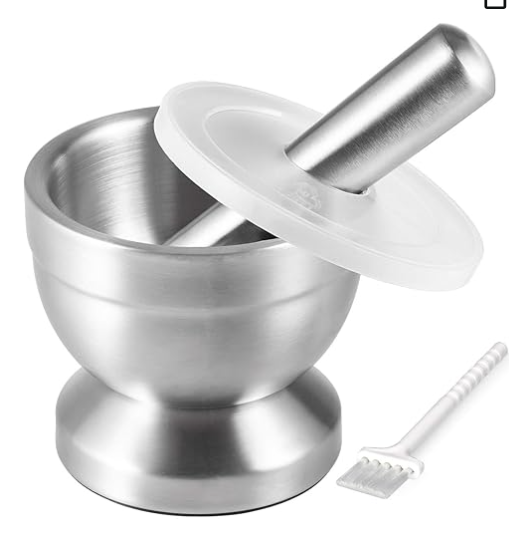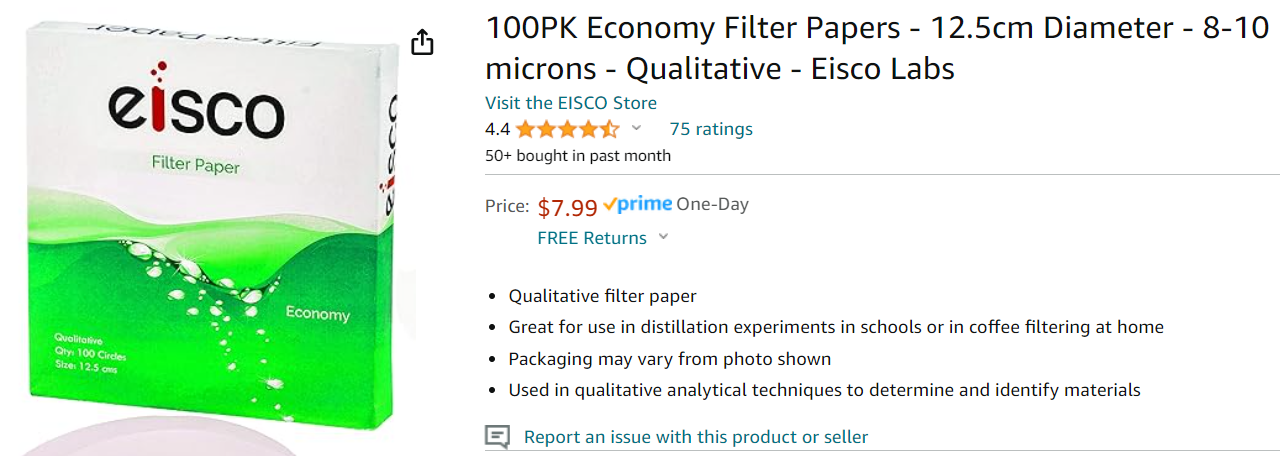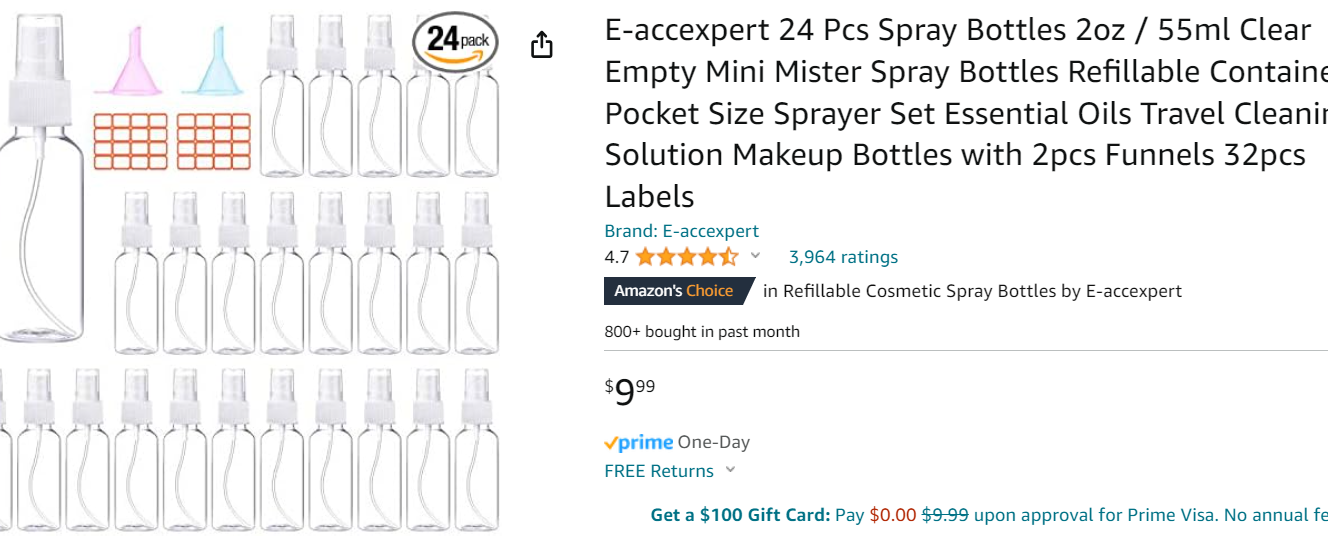I only added a little lemon juice to my original mixture because I was afraid some of the dasatinib might precipitate out. Of course, adding water tends to neutralize the pH range. My mixture ended up being between 5 and 6. I am using pH strips so the accuracy isn’t great. This time I am doing a test to see if any of the dasatinib precipitates out when I add water to the filtered batch of dasatinib, DMSO, and Transcutol. My first batch using a little lemon juice felt quite pleasant to me and has had only positive effects in the two weeks I have been using it.
One age-reversing effect, and I think I can call it age-reversing, from using the original rapamycin mixture topically administered and taking rapamycin orally is a great reduction in age spots on the backs of my hands.
I was trying to dissolve crab shell powder for chitosan. I searched, and found some post that says ascorbic acid would dissolve it. It did.
Ascorbic acid in aqueous solution has a pH of less than or equal to 3.
The post about chitosan is not in the pdf. It was from a Twitter exchange.
Dissolving undissolvables? I have succeeded in dissolving fisetin in vodka (tip from a member of age reversal forum). Might try it for hair growth.
Only jumping in here to say if your batch has a mild ph then you’ll need a preservative or it will go bad fast. It might be smarter to make a concentrated base batch of very low PH and then when you’re ready to use it pour some in a spray bottle and add water until the ph rises to 5-6, that’s ready for use.
I think it’s better than using a preservative which is usually an irritant and will be absorbed if you use DMSO. But in very low ph conditions nothing can grow.
Can I ask why you don’t like DMSO? I’ve just made a batch of topical serum with dmso and rapa🤔
I think DMSO is good at 10% in water or less. Otherwise it causes some irritation. DMSO is, however, not inert itself.
See this commentary on DMSO and other penetration enhancers from a dermatology textbook: Rapamycin for Hair Growth and Hair Pigmentation - #320 by RapAdmin
desertshores, It’s approaching 3 months since your last post on dasatinib. Do you have anything to report at this time? Thanks.
I think I may have posted on another thread.
My experience has been that my dasatinib spray has been overall more effective than externally applied rapamycin. It does, IMO, produce a very clear skin with some skin tightening. I think it is something that would help Dr Brad Stanfield’s skin. He is using everything but the kitchen sink with results that aren’t that great.
I would use it if Trancutol wasn’t available. DMSO is known to be hard on the skin structure.
It can also carry contaminates into the bloodstream. Plus I don’t like the funky aftertaste in the mouth after using it.
What is the best strength for skin rejuvination?
Who knows? My latest batch is 100mg dasatinib mixed in a 100cc DMSO, Transcutol, and water solution.
I mixed a little DMSO in this time because I was low on Transcutol.
My next batch will be 200 mg of dasatinib in 100cc of water and Trancutol.
With Brad Stanfield I agree. Whatever he is doing is not working as well as he would probably like.
I just looked him up. His skin looks alright no?
Hi desertshores- wondering what form of Dasatnib you are using. The only one I have is tabs which I’m thinking wouldn’t be the best for dissolving into a skin formula. Do you have a powder? If so, source? Thanks…
Much about what I am going to say was discussed in earlier threads, but in case you missed it:
Steps I use in making a dasatinib spray solution.
- Crush up your dasatinib tablets in a mortar and pestle. I use this one that I bought from Amazon.

-
Dissole dasatinib in 30ml Transcutol+DMSO. Allow the mixture to set awhile, stirring occasionally so that the dasatinib gets dissolved. There will some things in the tablet, like titanium dioxide that won’t dissolve. These will be filtered out later. Last batch I used 10ml DMSO and 20ml Transcutol.
-
Then add 70ml distilled water. (I actually just use bottled drinking water)
-
Mix and then filter. I use a small funnel and some coarse filter paper. (Yes, you could use coffee filter paper)
We just want to filter out any undissolved particulate that might clog our application sprayer.
- Put into small mist/spray bottles. Here are the ones I use, again from Amazon:
Disclaimer: I don’t actually know the best concentration or the best ratios for the mixture. It is purely experimental and I am not recommending it to anyone.
“Based on the solubilizing properties of Transcutol and the poor water solubility of Dasatinib, it is very likely that Transcutol would be an effective solubilizing agent for Dasatinib”
“Dasatinib can be dissolved in DMSO at concentrations up to 200 mg/mL”
You might add a little DMSO to your solution to ensure the dasatinib is fully dissolved
.
Transcutol®
(Diethylene Glycol
Monoethyl Ether): A Potential
Penetration Enhancer
https://sci-hub.se/10.1007/978-3-662-47039-8_12
Topical administration of the pan-Src kinase inhibitors,
dasatinib and LCB
Oh, I meant Retin A. What is usually prescription strength? Thinking of ordering from India maybe.
I use 0.1% tretinoin.
A new paper
Combined dasatinib and quercetin treatment contributes to skin rejuvenation through selective elimination of senescent cells in vitro and in vivo
The skin’s protective functions are compromised over time by both endogenous and exogenous aging. Senescence is well-documented in skin phenotypes, such as wrinkling and sagging, a consequence of the senescence-associated secretory phenotype (SASP) that involves the accumulation of senescent fibroblasts, chronic inflammation, and collagen remodeling. Although therapeutic approaches for eliminating senescent cells from the skin are available, their efficacy remains unclear. Accordingly, we aimed to examine the effects of dasatinib in combination with quercetin (D + Q) on senescent human skin fibroblasts and aging human skin. Senescence was induced in human dermal fibroblasts (HDFs) using approaches such as long-term passaging, ionizing radiation, and doxorubicin treatment. The generated senescent cells were treated with D + Q or vehicle. Additionally, a mouse-human chimera model was generated by subcutaneously transplanting whole-skin grafts of aged individuals onto nude mice. Mouse models were administered D + Q or vehicle by oral gavage for 30 days. Subsequently, skin samples were harvested and stained for senescence-associated beta-galactosidase. Senescence-associated markers were assessed by western blotting, reverse transcription-quantitative PCR and histological analyses. Herein, D + Q selectively eliminated senescent HDFs in all cellular models of induced senescence. Additionally, D + Q-treated aged human skin grafts exhibited increased collagen density and suppression of the SASP compared with control grafts. No adverse events were observed during the study period. Collectively, D + Q could ameliorate skin aging through selective elimination of senescent dermal fibroblasts and suppression of the SASP. Our findings suggest that D + Q could be developed as an effective therapeutic approach for combating skin aging.
paywalled
@RapAdmin this was interesting. It looks like a promising avenue for drug development (or reuse). I was particularly interested in the idea that ongoing “infections” (herpes virus) could be having an effect on human health. This was not the subject of the presentation but was mentioned as a thing.
I recall @ConquerAging believed the accumulation of damage (or left behind changes?) from past infections played a role in the decline of health with chron aging (time).
Is it a damage thing (accumulating scenescent cells), an immune system over activation thing (inflammation, autoimmune), or what? Does anyone have a theory?
I thought this was quite interesting and might point to the cause.

